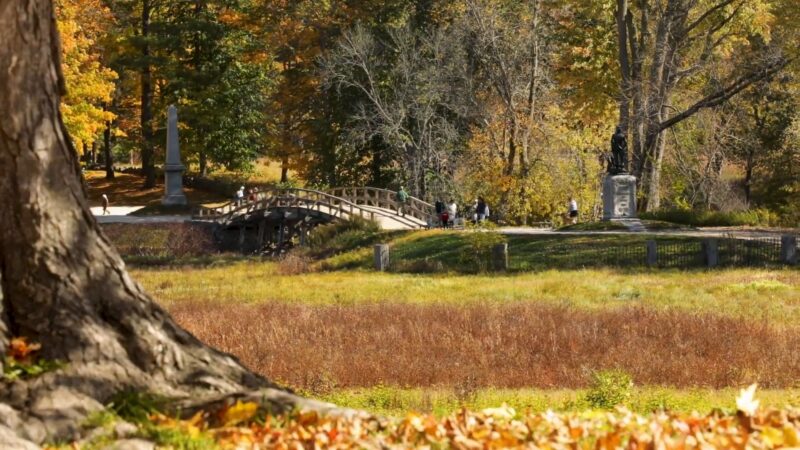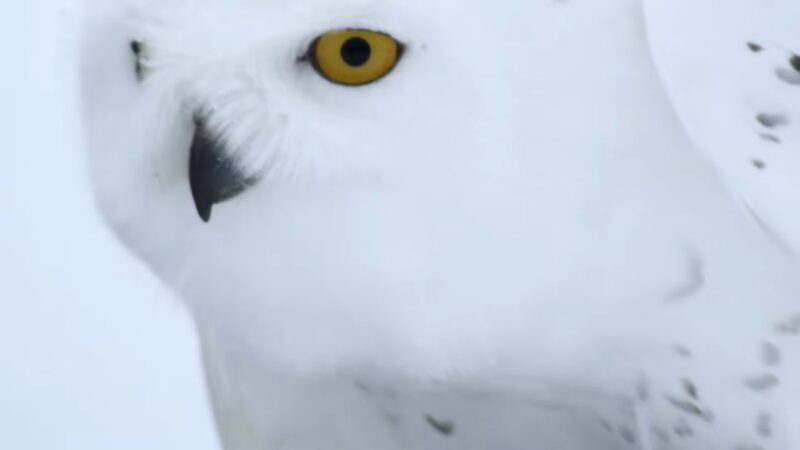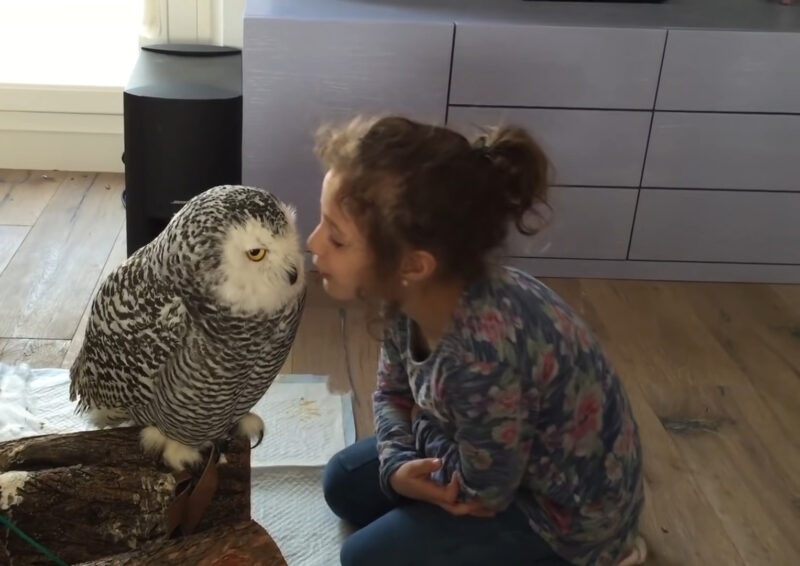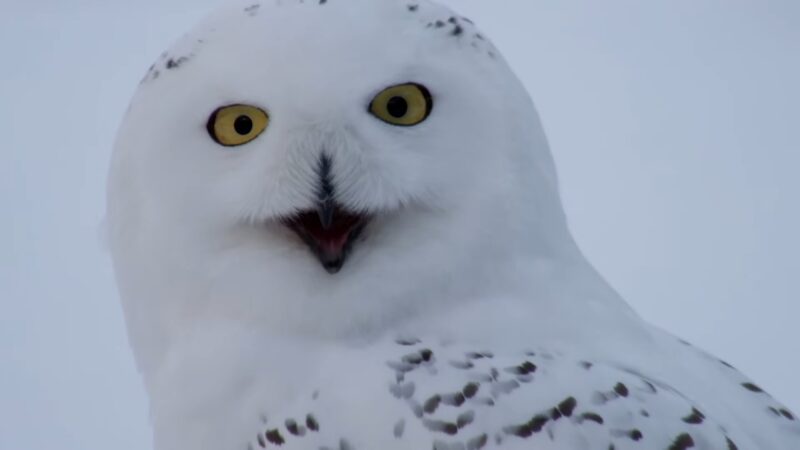Snowy Owls are one of the most iconic species of the Arctic Tundra, often capturing the imagination of birdwatchers, nature enthusiasts, and even Harry Potter fans. But what many don’t know is that these majestic birds also make their way to places like the Merrimack Valley.
In this comprehensive guide, we’ll journey through the life of the Snowy Owl, from its native Arctic habitat to its surprising presence in more temperate regions.
Home of the Snowy Owl
The Arctic Tundra is a harsh, unforgiving environment where only the fittest survive. It’s also the native habitat of the Snowy Owl.
Let’s explore the unique adaptations that allow these owls to thrive in such extreme conditions.
Adaptations for Arctic Survival
The Snowy Owl has a range of adaptations that make it well-suited for life in the Arctic. Its thick plumage provides insulation against the cold, while its white coloration helps it blend in with the snowy landscape, making it a stealthy predator.
- Thick Plumage: Keeps the owl warm in sub-zero temperatures.
- White Coloration: Provides camouflage against the snow.
In the Arctic, they primarily feed on lemmings, a small rodent that is abundant in the region. During years when lemmings are scarce, the owls have been known to expand their diet to include other small mammals and even birds.
- Lemmings: Make up the bulk of the Snowy Owl’s diet.
- Dietary Flexibility: Enables survival during lean years.
Why the Merrimack Valley?

While the Arctic is the primary habitat, these birds have been known to migrate to places like the Merrimack Valley. Understanding the factors that influence this migration can offer valuable insights into both the species and the ecosystems they inhabit.
Factors Influencing Migration
Several factors contribute to the migration patterns, including food availability in the Arctic and changes in weather conditions. Interestingly, younger owls are more likely to migrate than older ones, possibly due to competition for food resources in their native habitat.
- Food Availability: A key driver for migration.
- Weather Conditions: Extreme weather can push owls to migrate.
Impact on Local Ecosystem
The arrival of Snowy Owls in the Merrimack Valley has both positive and negative impacts on the local ecosystem. On one hand, they help control populations of small mammals like squirrels, but on the other, they can also pose a threat to local bird species, as they are apex predators.
- Population Control: Owls help in controlling small mammal numbers.
- Threat to Local Birds: Apex predators can disrupt local ecosystems.
Physical Characteristics

They are often admired for their stunning appearance, but their physical features serve functional purposes that are crucial for their survival. Let’s explore the intricate details of its feather structure, eyes, and beak.
Feather Structure and Coloration
The feathers of a Snowy Owl are not just for show; they serve multiple functions. The dense feathering on the legs and feet acts as natural “snow boots,” providing insulation against the cold ground.
The white feathers offer excellent camouflage, while the occasional black markings help in heat absorption.
- Dense Feathering: Acts as insulation.
- Camouflage and Heat Absorption: Dual function of coloration.
Eye and Beak Features
The Snowy Owl’s eyes are one of its most striking features. The yellow coloration is not just for aesthetics; it helps in maximizing the amount of light that enters the eye, which is crucial in the low-light conditions of the Arctic.
Similarly, the beak is designed for tearing flesh, making it easier for the owl to consume its prey.
- Yellow Eyes: Maximize light intake.
- Sharp Beak: Designed for a carnivorous diet.
Mating and Reproduction
The mating and reproductive behaviors of Snowy Owls are intricately tied to their survival in the Arctic Tundra. Understanding these behaviors not only offers a glimpse into their social structure but also provides valuable data for conservation efforts.
Courtship Rituals
Snowy Owls have a unique courtship ritual that involves aerial displays, vocalizations, and gift-giving in the form of prey. The male performs a series of swoops and dives to attract a female, and if she is interested, she may respond with calls or even join him in the aerial display.
- Aerial Displays: Demonstrates the male’s fitness and agility.
- Gift-giving: Strengthens the pair bond and shows the male’s hunting prowess.
Nesting and Offspring
Once a pair is formed, the female selects a nesting site, usually on a small mound to give her a good vantage point. She lays up to 11 eggs, depending on the availability of food. Both parents take turns incubating the eggs and feeding the young once they hatch.
- Nesting Site: Elevated positions are preferred for better visibility.
- Parental Care: Both parents are involved in raising the young.
Interaction with Humans

As They migrate to more populated areas like the Merrimack Valley, interactions with humans become inevitable. These interactions can be both beneficial and detrimental to the owls, making it a topic of great importance for conservationists.
Positive Interactions
Some interactions with humans have been beneficial for Snowy Owls. Birdwatchers and photographers often contribute to citizen science projects that help researchers gather data on owl populations, migration patterns, and health.
- Citizen Science: Public involvement aids in data collection.
- Awareness: Human interest can drive conservation efforts.
Negative Interactions
Unfortunately, not all human interactions are positive. They face threats from vehicle collisions, illegal hunting, and habitat destruction due to urban development. These factors can have a significant impact on their population and overall well-being.
- Vehicle Collisions: A leading cause of mortality among migrating owls.
- Habitat Destruction: Urban development poses a long-term threat.
Conservation Efforts
The conservation of Snowy Owls is a multi-faceted endeavor that involves various stakeholders, from governments to local communities. With the challenges of climate change and human encroachment, these efforts are more critical than ever.
Legal Protections
They are protected under various international laws and treaties, including the Migratory Bird Treaty Act in the United States. These laws make it illegal to hunt, capture, or sell these birds, providing a legal framework for their protection.
- Migratory Bird Treaty Act: Provides legal protection in the U.S.
- International Laws: Offer a global framework for conservation.
Community Involvement
Local communities play a crucial role in conservation efforts. From participating in owl counts to habitat restoration projects, community involvement is key to long-term survival.
- Owl Counts: Help in monitoring population trends.
- Habitat Restoration: Local efforts can make a big difference.
FAQ
Why do they migrate to places like the Merrimack Valley?
They migrate to places like the Merrimack Valley primarily due to food availability and changes in weather conditions in their native Arctic habitat. Younger owls are more likely to migrate, possibly due to competition for food resources.
What do they eat?
In their native Arctic habitat, they primarily feed on lemmings. However, they can expand their diet to include other small mammals and even birds when lemmings are scarce.
How do They adapt to the Arctic environment?
Snowy Owls have several adaptations for Arctic survival, including thick plumage for insulation and white coloration for camouflage. Their diet is also flexible, allowing them to survive in years when their primary food source, lemmings, is scarce.
Are They protected by law?
Yes, Snowy Owls are protected under various international laws and treaties, including the Migratory Bird Treaty Act in the United States. These laws make it illegal to hunt, capture, or sell these birds.
How can local communities help in their conservation?
Local communities can participate in owl counts, habitat restoration projects, and other citizen science initiatives. Public awareness and involvement are crucial for the long-term survival of Snowy Owls.
Final Words
We hope this comprehensive guide has provided you with valuable insights into the fascinating world of Snowy Owls. From their Arctic origins to their surprising presence in places like the Merrimack Valley, these majestic birds continue to captivate and inspire.
As we face the challenges of climate change and habitat loss, understanding and protecting these creatures becomes more important than ever. Thank you for joining us on this journey, and we encourage you to stay involved in conservation efforts to protect these magnificent birds.
